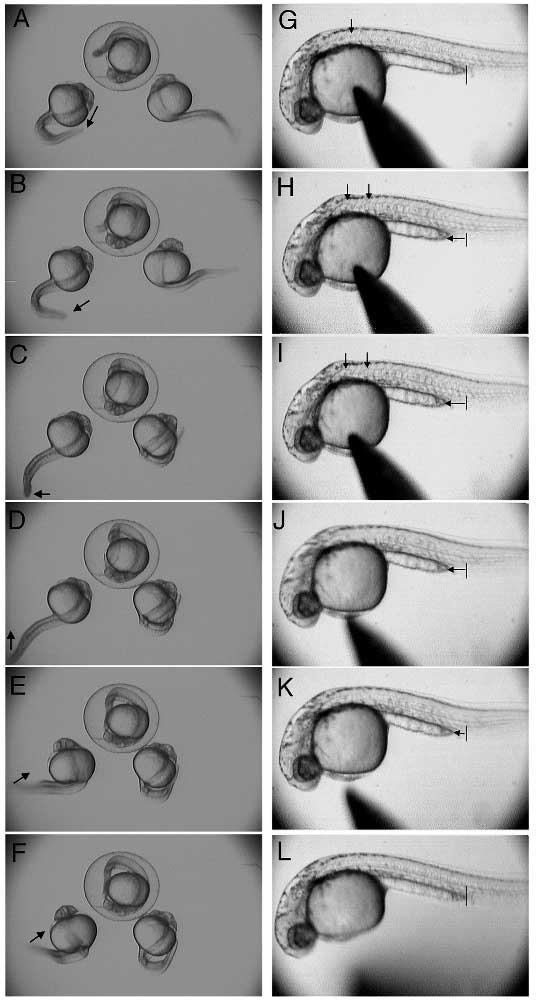Fig. 6
Wild-type and ?accordion? behavior at around 30 hours. Wildtype embryos (A-F) and beo mutant embryos (G-L) were liberated from their chorions and their behavior monitored. Wild-type embryos move their tail from one side of the body to the other (A-F). In contrast, ?accordion? group mutants contract along their body axis (G-L). A line behind the yolk extension is added as a constant reference. The lengths of the horizontal arrows reflect the contraction along the antero-posterior axis of the embryo. The vertical arrows point to the region in the anterior notochord that becomes compressed during the contraction (H,I).

